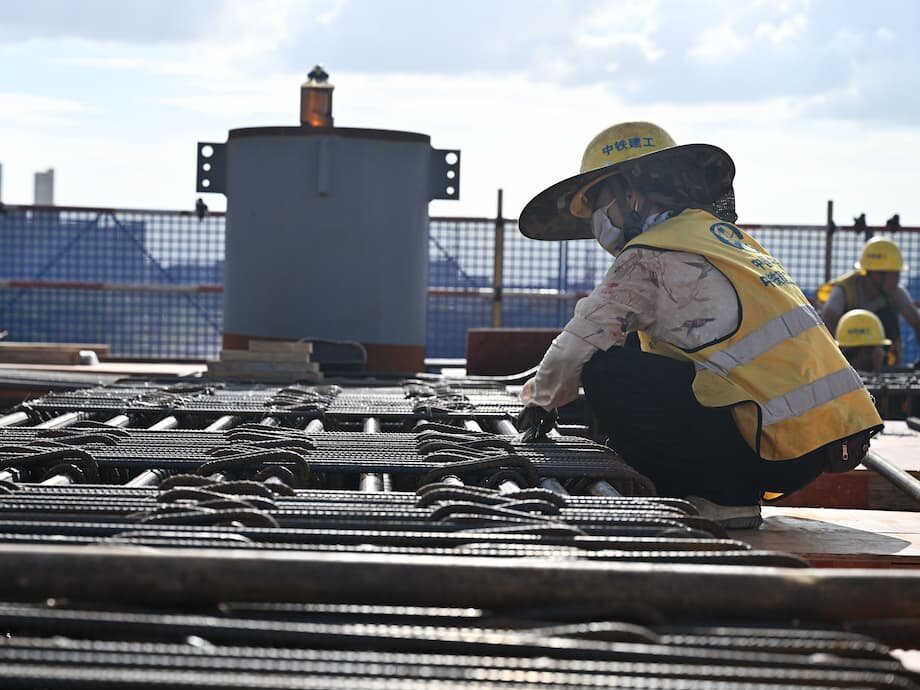China’s Overcapacity Crisis: Why It Matters at Home and Around the World
China’s remarkable rise as a global manufacturing powerhouse has transformed the world’s supply chains and delivered affordable goods to billions. But beneath the surface of this industrial success story lies a mounting crisis: overcapacity. From electric vehicles (EVs) and solar panels to steel and housing, China is producing far more than its domestic market can absorb. This glut is not just an economic headache for China—it is sending shockwaves through global markets, fueling trade tensions, and reshaping the international economic order.
- China’s Overcapacity Crisis: Why It Matters at Home and Around the World
- What Is Overcapacity and Why Is It a Problem?
- Domestic Consequences: Profit Squeeze, Debt, and Deflation
- Global Shockwaves: Trade Tensions and the “Second China Shock”
- Green Transition: Boon or Bane?
- International Responses: Tariffs, Trade Barriers, and Investment Screening
- Why Is Overcapacity So Hard to Fix?
- Is There a Way Forward? Cooperation, Reform, and the Search for Balance
- In Summary
Understanding the roots, impacts, and possible solutions to China’s overcapacity problem is crucial for policymakers, businesses, and consumers worldwide. This article explores the causes of China’s overcapacity, its effects on the Chinese economy, and the ripple effects felt from Southeast Asia to Europe and beyond.
What Is Overcapacity and Why Is It a Problem?
Overcapacity occurs when an industry’s production capability far exceeds the demand for its goods. In China, this means factories, plants, and infrastructure projects continue to expand—even as domestic consumption stalls. The result is a flood of unsold products, falling prices, shrinking profits, and mounting debt for companies and local governments.
While overcapacity is not unique to China, the scale is unprecedented. According to Rhodium Group, China’s manufacturing trade surplus ballooned by $775 billion between 2019 and 2023, with the country able to produce about three times more EVs than it can sell domestically. This has led to aggressive price-cutting, losses for manufacturers, and a surge in low-cost exports that disrupts global markets.
How Did China Get Here?
China’s overcapacity crisis is rooted in its growth model. For decades, the government has prioritized investment in manufacturing and infrastructure as the engine of economic development. Generous subsidies, cheap financing, and industrial policy have encouraged both state-owned and private firms to expand relentlessly, often with little regard for actual demand.
This approach delivered rapid growth and technological progress, especially in sectors like EVs, solar panels, and high-speed rail. But as domestic consumption failed to keep pace, the mismatch between supply and demand became acute. The COVID-19 pandemic and subsequent stimulus measures only intensified the problem, as production ramped up while household spending remained weak.
Which Sectors Are Most Affected?
China’s overcapacity is widespread, affecting both traditional and high-tech industries:
- Electric Vehicles (EVs): China can produce far more EVs than it can sell at home, leading to price wars, losses, and a surge in exports.
- Solar Panels and Batteries: China’s production capacity for solar equipment and lithium batteries far exceeds global demand, driving down prices but also threatening manufacturers in other countries.
- Steel, Aluminum, and Construction Materials: Chronic oversupply has led to deflation, job losses, and financial distress for producers.
- Housing and Infrastructure: Years’ worth of unsold housing inventory and underused infrastructure projects, especially in smaller cities, have left local governments and developers deeply in debt.
- Emerging Technologies: Overcapacity is now emerging in sectors like legacy semiconductors, industrial machinery, and electrolyzers for green hydrogen.
President Xi Jinping has acknowledged the problem, urging local governments to avoid overinvestment in AI and EVs. However, the systemic nature of overcapacity—driven by industrial policy and the pursuit of self-reliance—makes it difficult to resolve quickly.
Domestic Consequences: Profit Squeeze, Debt, and Deflation
The domestic fallout from overcapacity is severe. As companies compete to sell excess goods, prices fall and profits evaporate. Many firms survive only because of “soft budget constraints”—the expectation that the government or banks will bail them out, rather than letting them go bankrupt. This keeps weak firms afloat, perpetuating inefficiency and debt.
China’s GDP deflator—a measure of economy-wide price changes—has fallen for nine consecutive quarters as of June 2025, signaling persistent deflation. This is a worrying sign for policymakers, as deflation can stifle investment, depress wages, and make debt burdens harder to manage.
In sectors like high-speed rail, the consequences are stark. While some lines are profitable, 80-85% operate at a loss, and China Railway is deeply in debt. Overbuilding, corruption, and poorly located stations have compounded the problem. The housing sector faces similar challenges, with declining household formation and future demand expected to be half of what it was in the previous decade.
Senior Chinese officials have identified overcapacity as a major obstacle to economic recovery. However, state media often downplay or deny the problem, framing Western concerns as politically motivated. This mixed messaging complicates policy responses at the regional level, where local officials are caught between competing directives.
Global Shockwaves: Trade Tensions and the “Second China Shock”
China’s overcapacity is not just a domestic issue—it is reshaping global trade and fueling international tensions. As Chinese firms export their surplus goods at low prices, industries in other countries struggle to compete. This has led to what some call the “second China shock,” echoing the disruptive impact of China’s entry into the World Trade Organization in 2001.
Impact on Emerging Economies
Emerging economies, especially in Southeast Asia (ASEAN) and Latin America, are feeling the brunt of China’s export surge. According to the Asia Society, ASEAN has become China’s largest export market, with imports of Chinese goods displacing local industries and widening trade deficits. Sectors like textiles, furniture, steel, and machinery are particularly vulnerable, leading to job losses and factory closures in countries like Indonesia and Vietnam.
While Chinese investment in ASEAN—especially in EVs, batteries, and solar panels—brings capital and technology, it also increases dependency and can crowd out local suppliers. Policymakers in the region are responding with trade remedies, taxes on low-value imports, and efforts to diversify supply chains. However, balancing economic ties with China and protecting domestic industries remains a complex challenge.
Impact on Developed Economies
Developed economies, including the United States and the European Union, are also grappling with the consequences of Chinese overcapacity. The US has imposed high tariffs on Chinese steel, EVs, solar panels, and other products, citing unfair trade practices and national security concerns. The EU has launched anti-dumping investigations and raised duties on Chinese EV imports, fearing a flood of cut-price goods that could undermine its industrial base.
Laurent Saint-Martin, France’s trade minister, captured the mood in Europe:
“We need to rebalance trade relations between the EU and China in line with our industry, our economic security and low carbon agendas. At the same time, we need to push our very assertive trade policy with them, especially fighting against overcapacity, especially during this very specific trade war time.”
There are also fears that US tariffs will divert Chinese exports to Europe, intensifying competition for local firms already under strain.
Impact on the Global South
For countries in the Global South, China’s overcapacity presents both opportunities and risks. On one hand, cheap Chinese goods—especially in green technologies like solar panels—make clean energy more affordable. On the other, local manufacturers struggle to compete, and trade deficits with China widen. Some countries, like India, Brazil, and Argentina, have responded with tariffs and local content requirements to protect their industries. Others encourage Chinese investment under conditions that require technology transfer and local sourcing.
The European Union sees an opportunity to support Global South economies by helping them strengthen regulatory frameworks and diversify their industrial bases, offering an alternative to China’s export-driven model.
Green Transition: Boon or Bane?
China’s overcapacity is particularly pronounced in green technologies—solar panels, batteries, and EVs. This has driven down prices globally, accelerating the adoption of clean energy and electric vehicles. For example, Chinese industrial policy contributed to an 80% decline in solar module prices between 2011 and 2021, making solar power more accessible worldwide.
However, this dominance also raises concerns about supply chain dependence and the viability of domestic green industries in other countries. While consumers benefit from cheaper goods, policymakers worry about losing control over critical sectors and the risk of future supply disruptions.
Developing countries face a dilemma: should they rely on affordable Chinese green goods or invest in domestic production for self-sufficiency? Wealthy nations can afford protectionist measures, but poorer countries often lack the resources to compete.
International Responses: Tariffs, Trade Barriers, and Investment Screening
Governments around the world are responding to China’s overcapacity with a mix of defensive measures:
- Tariffs and Anti-Dumping Duties: The US, EU, India, and others have imposed tariffs on Chinese steel, EVs, solar panels, and other products to protect domestic industries.
- Investment Screening: Developed countries are scrutinizing Chinese investment, especially in strategic sectors, for national security reasons.
- Trade Remedies and Local Content Requirements: Emerging economies are using these tools to shield local industries and encourage technology transfer.
- Supply Chain Diversification: Efforts are underway to reduce reliance on Chinese inputs, especially in critical sectors like semiconductors and green technologies.
Despite these measures, China remains the world’s top producer and exporter of many goods, often absorbing the cost of tariffs or redirecting exports to third countries. This has led to the development of anti-circumvention instruments, which extend tariffs to Chinese goods exported via other markets.
Why Is Overcapacity So Hard to Fix?
China’s overcapacity is deeply embedded in its economic model. The government’s focus on industrial policy, self-reliance, and economic security means that profitability and efficiency often take a back seat to strategic goals. State support, subsidies, and market intervention keep unprofitable firms alive, making it difficult for market forces to correct imbalances.
Efforts to regulate capacity expansion—such as imposing higher quality standards or restricting new licenses—have had limited success. Stimulating domestic demand is seen as a more sustainable solution, but consumer confidence remains low, and household consumption has not increased enough to absorb excess production.
Exports have traditionally compensated for weak domestic demand, but the era of easy access to global markets is fading as trade barriers rise. Even as China strengthens ties with the Global South, many emerging nations are imposing their own trade barriers to protect local industries.
Is There a Way Forward? Cooperation, Reform, and the Search for Balance
Experts agree that unilateral or bilateral trade actions are unlikely to resolve the overcapacity crisis. Instead, multilateral cooperation and reform of the global trading system are needed to address structural imbalances and restore stability.
Recent US-China talks have led to some tariff reductions and the establishment of mechanisms for cooperative dialogue. However, the underlying drivers of overcapacity—such as persistent demand shortfalls and industrial subsidies—require deeper reforms, both within China and in the rules governing international trade.
Some analysts suggest that encouraging Chinese firms to invest abroad, as Japan did in the 1980s, could help absorb excess capacity and create win-win outcomes. Others argue that only a fundamental shift in China’s growth model—toward a more consumer- and services-based economy—can provide a lasting solution. This would require loosening state control, allowing more market-driven practices, and boosting household incomes.
For now, policymakers around the world must balance the benefits of affordable Chinese goods with the risks of overreliance and the need to protect their own industries. The stakes are high: how China and its trading partners manage the overcapacity crisis will shape the future of global trade, industrial development, and the green transition.
In Summary
- China’s overcapacity crisis is rooted in its investment-driven growth model and industrial policy, leading to chronic oversupply in sectors like EVs, solar panels, steel, and housing.
- Domestically, overcapacity is causing profit destruction, debt, and deflation, with many firms surviving only due to government support.
- Globally, the export of surplus goods is fueling trade tensions, disrupting industries in both emerging and developed economies, and prompting defensive measures like tariffs and investment screening.
- China’s dominance in green technologies has accelerated the global clean energy transition but also created new dependencies and competitive challenges.
- Efforts to address overcapacity require multilateral cooperation, reforms to China’s economic model, and a careful balancing of trade, industrial, and environmental goals.
- The outcome will have far-reaching implications for global economic stability, industrial development, and the fight against climate change.












